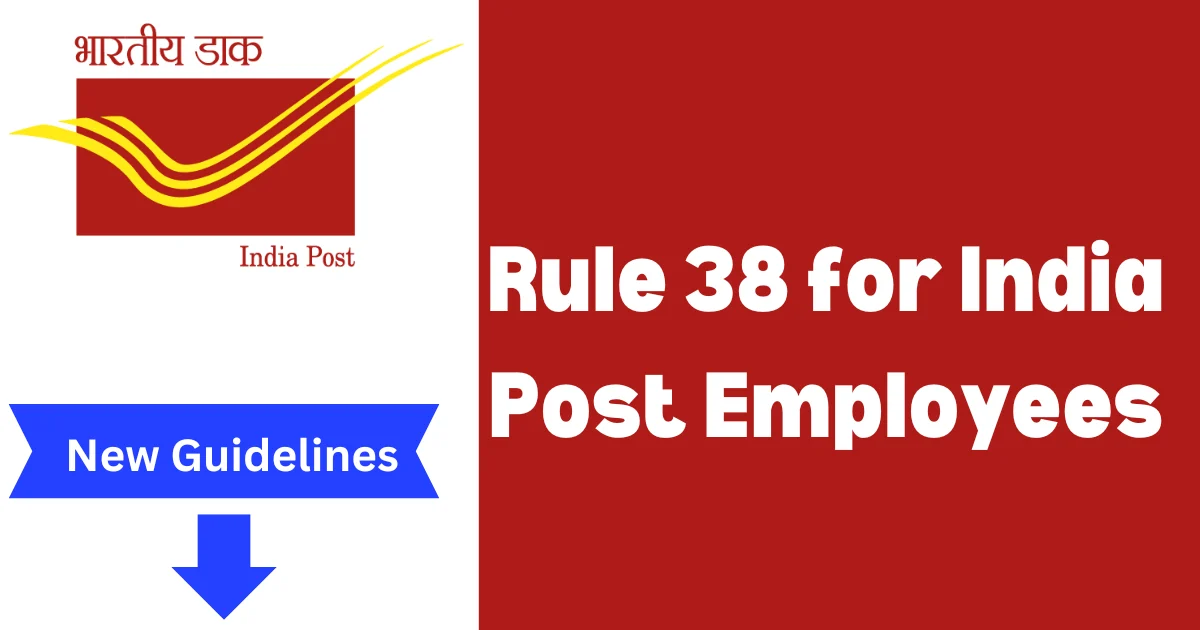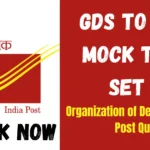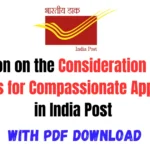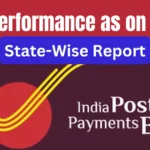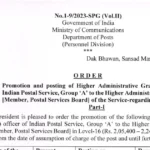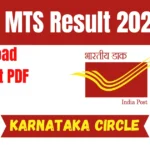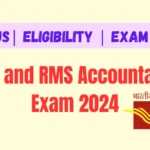Key Highlights
- 1 Rule 38 for India Post Employees: Essential Guidelines in 2024 for Smooth Transfers and Career Growth
- 2 What Is Rule 38 For India Post Employees?
- 3 Background: Previous Memo and Guidelines on Rule-38 Transfer
- 4 Outlook of Rule 38 For India Post Employees in Tabular view in 2024
- 5 Key Updates in the Latest Guidelines for Transfer Under Rule 38 for India Post Employees
- 6 Procedural Aspects and Impact on Staffs
- 7 Additional Considerations Under Rule 38 for India Post Employees
- 8 Conclusion: What Need to Know about Rule 38 for India Post Employees
Rule 38 for India Post Employees: Essential Guidelines in 2024 for Smooth Transfers and Career Growth
Rule 38 for India Post Employees: The Department of Posts (DOP) is one of the integral parts of postal services operational in India, entrusted with the onerous task of providing postal mail delivery services of national importance to citizens and conducting postal financial services. It now stands over 150 years and continues to evolve with changing times, keeping its policies well-suited to both its workforce and the public.
Perhaps one of the major components in managing the workforce in the Department of Posts is transfer policy. Transfer can help develop employees by providing new learning experiences and exposures across different geographical locations. At the same time, it can also help the department make the best use of its workforce at different levels and ensure that there is continuity with regard to postal services.
What Is Rule 38 For India Post Employees?
The Rule-38 of the India Post service regulations deals with the transfer of officers in the Department. It comprises Group ‘C’ officials and Group ‘B’ (Non-Gazetted) officials and Assistant Superintendents of Posts, Group ‘B’ Gazetted. Transfers basically include the temporary transfers that have been dealt with, viz., Intra-Circle and Inter-Circle. The general aim or objective of these rules is that the transfers should be dealt with a regulated and systematic approach.
Background: Previous Memo and Guidelines on Rule-38 Transfer
The Directorate released the first set of guidelines with respect to rules 38 transfers through memo number 141-141/2013-SPB-II dated 17th January, 2019. Those initial guidelines have provided the general framework with which India Post has governed temporary transfers till now, with the principal emphasis on putting consistency, fairness, and transparency into the transfer process.
After the issuance of the 2019 communication, some adjustments were done to make the process in better streamlining and enhancement:
September 2, 2021: Some provisions have been edited for better clarity and to address many practical issues faced by staff.
Latest News
July 9, 2024: More edits to make the transition process smoother, more for clarity.
However, the latest communication dated 12th November 2024 under Memo No: X-12/6/2021-SPN-II-DOP-Part(1) is a very important update to the transfer guidelines. It answers most of the questions and issues posed by employees in respect of promotion during the transfer period as well as the three-year gap rule between two spells of temporary transfer.
Outlook of Rule 38 For India Post Employees in Tabular view in 2024
| Key Aspect | Details |
|---|---|
| Guideline Focus | Regulation of temporary transfers under Rule 38 for India Post employees |
| Eligibility | Group ‘C’, Group ‘B’ (Non-Gazetted), and Assistant Superintendents of Posts (Group ‘B’ Gazetted) |
| Duration of Temporary Transfer | Maximum of 3 years in one or two spells, with a 3-year gap between spells |
| Promotion During Transfer | Promotions must be accepted within 1 month to avoid promotion debarment |
| Impact on Career Growth | Provides employees opportunities for career development and new experiences |
| Key Date for Updates | Memo No: X-12/6/2021-SPN-II-DOP-Part(1) dated 12th November 2024 |
Key Updates in the Latest Guidelines for Transfer Under Rule 38 for India Post Employees
The new memo of 12 November 2024 introduces several updates, especially in terms of the gap of three years between two temporary transfers under rule 38 for India Post Employees and its effect on the promotion during the temporary transfer period. Now let us put our brains together and think what are the major changes and clarifications:
1. Duration of Short-Term Transfers
Under the old rules, for a temporary transfer, the total for three years was to be taken across one or two spells. That way, employees may experience different postal circles and roles but there was an evident boundary not to cause them undue disruption to their careers.
2. Time elapsed between two episodes of Ephemeral Transfers
The most critical requirement for temporary transfers is to have at least three years of gap between the two separated periods of transfer. The provision aimed to ensure no semblance of frequent transfers, which would probably destabilize a career since it would constantly be undergoing transfers. It enables the officials to stay put in their first posting before they can apply for another transfer.
3. Advertisement with Transitory Transfer
One of the major changes of the new guidelines is in the handling of promotions in relation to officials when they are temporarily transferred. The previous guidelines had it that an officer undergoing temporary transfer who happens getting promoted is supposed to join the promoted post after a period of one month. Failure to join the promoted post results in debarment from promotion for a period of one year.
However, the latest letter removes all ambiguity where if an officer joins the promoted post during the period of temporary transfer, the whole period shall be treated as a single period of temporary transfer. Thereby, not penalizing officials for promotions which happen during the transfer period of such officers so that they may complete their assignments without any interruptions.
Apart from that, in case of an official promotion and subsequent application for another rotation transfer, it is eligible to transfer only after one year in the new cadre. This provides a guarantee to the respect of promotions so that employees can gain considerable experience in the new posts before seeking further transfers.
4. Clarification on the Three-Year Gap Condition
One of the most contentious issues that has cut across in the interpretation of the three-year rule is whether the three years applies when officers are promoted whilst still under temporary transfer. The new memorandum clarifies it as not applying if an employee enters his promoted post during the temporary transfer period as a new spell and thus this amounts to a continuation of the transfer.
However, to be eligible to get another transfer, he has to serve for one year in the new cadre.
This clarification on Rule 38 for India Post Employees eliminates the ambiguity that existed between transfers and makes sure that the employees will be treated fairly even when they are transferred and promoted during their transfer spells.
Procedural Aspects and Impact on Staffs
New guidelines on the temporary transfer policy under Rule 38 For India Post Employees will directly come to impact workers who wish to be transferred or who may be promoted while on temporary transfer. Here is how new rule will affect employees:
Temporary Transfers and Career Stability: Employees seeking temporary transfers are eligible for temporary transfers for up to three years. However, employees already on a temporary transfer must wait for at least three intervening years before application for an application for another spell of transfer, except if the worker gets promoted during such a period.
Promotion and Transfer: As discussed earlier, an employee while on temporary transfer is promoted, the employee is expected to accept the promotion within one month to debar him/ her from further promotions. This policy ensures officials are on the right track of making timely career decisions hence does not delay promotion based on any pending transfers.
Career Planning: The regulation shall guide the career planning of officers by establishment of set timelines and terms under which transfers and promotions can be sought. The one-year waiting period after the transfer spell ensures that the worker is not transferred too frequently, giving the employee enough time to get settled into their new post.
Organisational Efficiency: These rules guarantee a sure productive workforce for the Department of Posts. The regulation of the transfer process ensures that personnel are deployed effectively to meet organisational requirements, while providing the deployed person with opportunities for growth and development at the same time.
Additional Considerations Under Rule 38 for India Post Employees
Intra-circle transfers vs. inter-circle transfers: Though intra-circle transfer and inter-circle transfer both fall under the purview of Rule-38, the employees must see to it that they know which transfers are different from others in terms of procedures. Although intra-circle transfers logistically don’t have much of a problem regarding the same areas, the inter-circle transfers are mostly associated with more bureaucratic demands.
Post-COVID Adaptations: Given the COVID-19 pandemic’s long-lasting impact on the postal services and the workforce, the Department may continue to refine its transfer policies. This could involve more flexibility in handling transfers based on regional needs or exceptional circumstances.
Source: CEPT
Conclusion: What Need to Know about Rule 38 for India Post Employees
This new guidelines under Rule 38 for India Post Employees give adequate management to the circuited transfers of India Post employees. In fact, this dated 12th November 2024 memorandum marks a momentous day in ensuring fair post officials: fairness in their treatment, transparency over the choice of posting, and career development of the officials. The Department of Posts has made the process flexible and more employee-friendly by addressing key issues such as promotions during transfers and the three-year gap rule.
These guidelines, therefore, must be read and internalized in the discharge of transfers for Group ‘C’ officials, Group ‘B’ (Non-Gazetted) officials, and Assistant Superintendents of Posts under Group ‘B’ Gazetted.
Among the changes within this organization and the challenge it poses to employees, knowledge of the most recent regulations and guidelines remains a must for India Post. This will in turn ensure that employees derive the best out of the benefits the company offers and help post service become more efficient.

